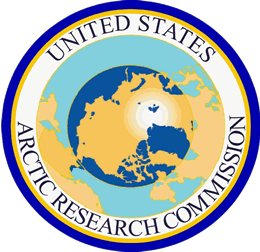I’m continuing to feed my passion for all things Arctic (it’s just so cool…) in my second internship, this one with the US Arctic Research Commission (USARC).

USARC is a tiny but well-connected Federal agency tasked with helping to steer the large agenda of federal Arctic research. USARC is a hub for information. The Executive Director sits on what seems like hundreds of different boards and committees and thus has a finger on the pulse of what is happening in Arctic research. USARC recently used this knowledge to put together its biennial Goals Report, which is designed to direct the federal government on where it should be focusing its research efforts.
Any Arctic nerd will already be signed up for the USARC’s Arctic Daily Update, which compiles Arctic news, events, and current legislation efforts into one daily dose.
Over the summer, the Arctic caught the spotlight with the White House Arctic Science Ministerial, which brought together leaders across the globe and sparked conversation about overlapping goals in the Arctic region. USARC published a Ministerial report so the public could see the results of the meeting.
I had the opportunity to help produce these documents and to dip my toes a bit more into science policy writing.
However, my biggest task during my time at USARC was far from anything I’d ever done before. My boss wanted to know: How much does the US federal government spend on Arctic research?
Sounds simple, right? Nope.
This exercise was both an exercise in embracing complexity and in being satisfied with taking one tiny step forward at a time. I will spare you the gory details of what makes such a question so hard to answer, but I will say that I spent a lot of time digging around convoluted agency websites, looking at outdated budget information, and going cross-eyed looking at spreadsheet after spreadsheet with seemingly contradictory information. On top of that, agencies are reluctant to release their budget breakdowns because of what can happen to scientists and their funding when their research is on a politically charged topic. Also…brain teaser…how do you determine what percent of a multi-million dollar satellite project that orbits the globe and gathers data from the entire planet counts as Arctic research? Also, how do you define research? WHEW.
Anyway, the answer (for Fiscal Year 2016) is somewhere between 630 million and 1 billion dollars, depending on how you cut things.
This was the most challenging professional task I have ever faced. I had to learn patience, to approach things from a variety of angles, to be clear and precise, and to, for Pete’s sake, KEEP TRACK OF MY METHODOLOGY. I’d have never guessed, but I rather liked being a budget detective. I felt like I was on a case, looking for clues, and following the money.
And now, after many a spreadsheet-filled nightmare, I can grin wide and say that I am the world’s leading expert on the budget for federal research in the Arctic for FY2016. For me, that is something to be proud of.

